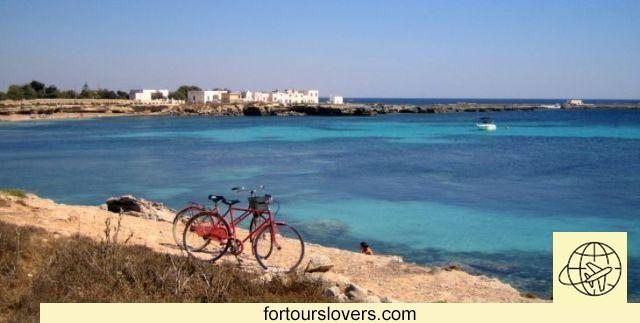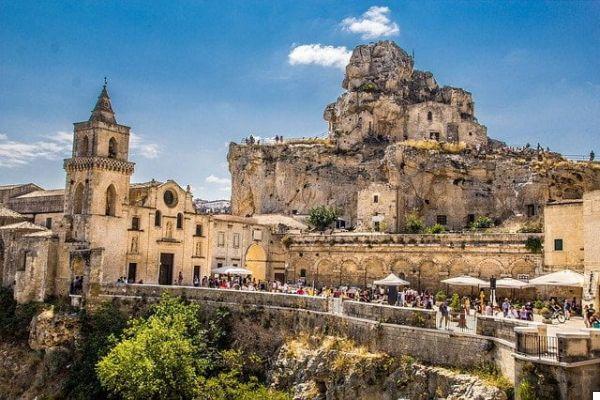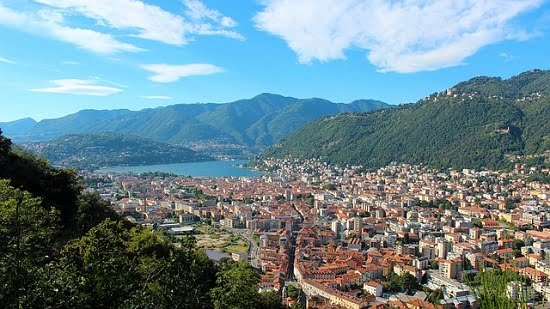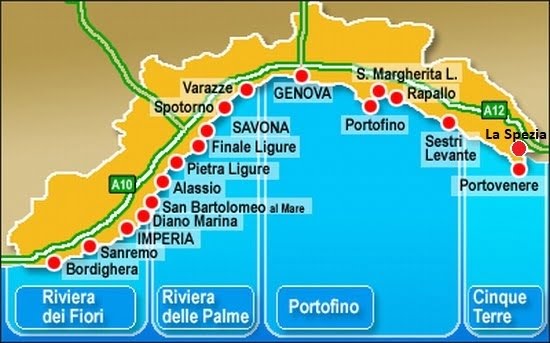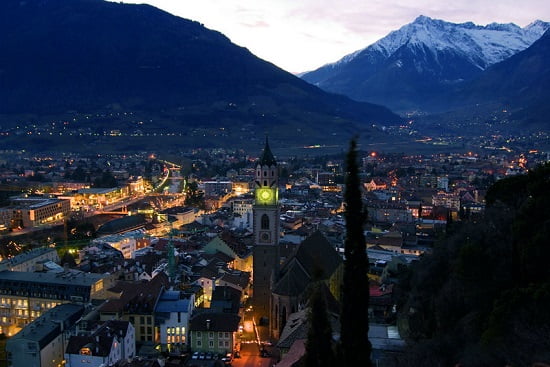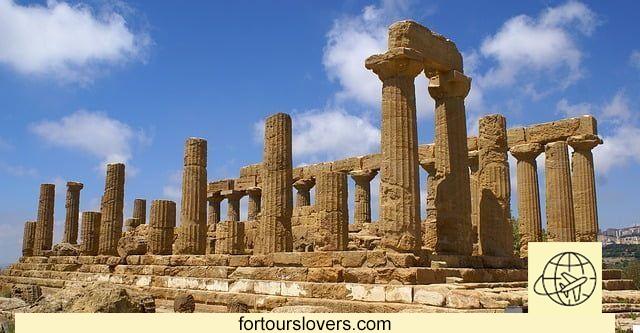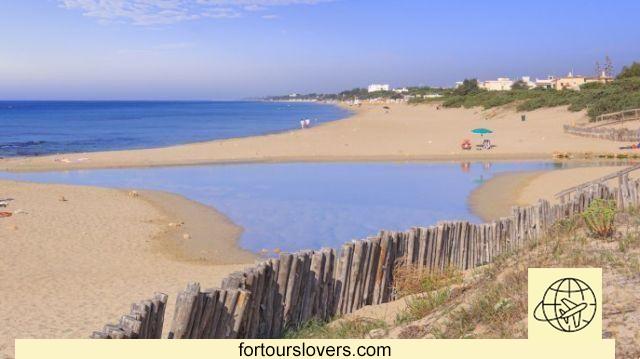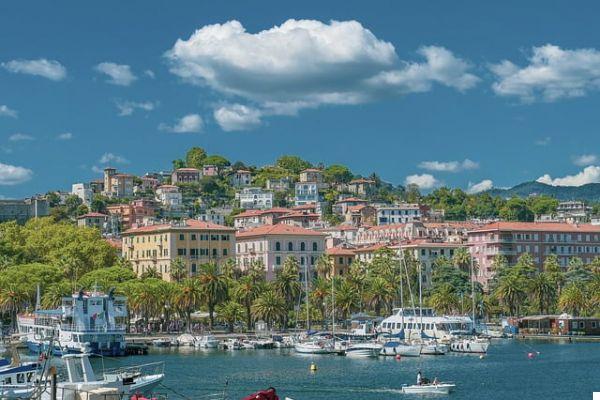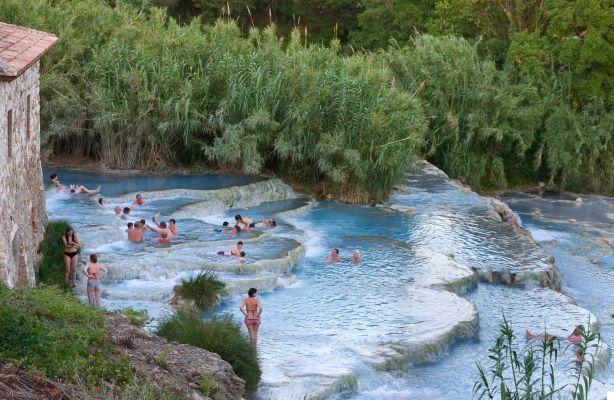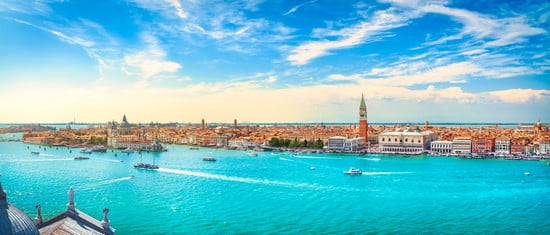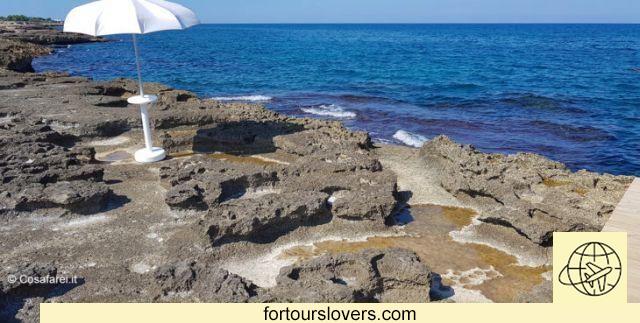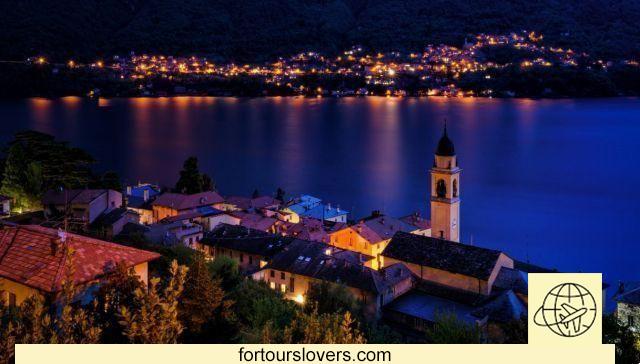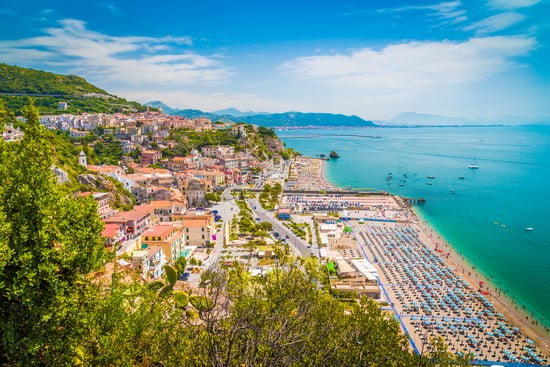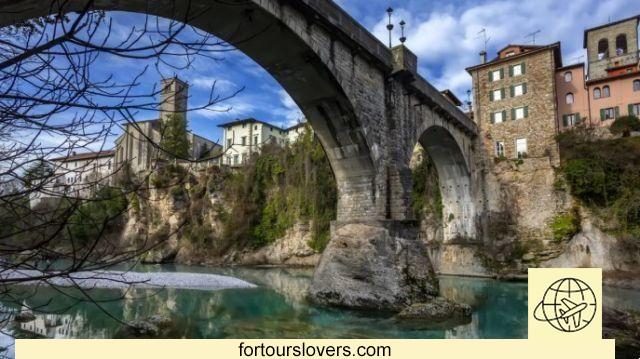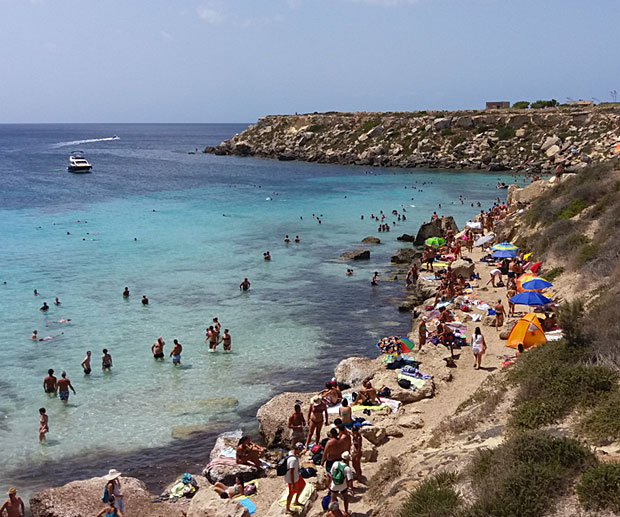Venice is one of the most visited cities in the world and, even if there are so many things to see in the city, visit Murano it is definitely one of the "highlights" and a wonderful break from the crowds of Venice.
Known all over the world for the beautiful Murano glass, rigorously worked by hand, this small island is the place to still see how an old mastery is still practiced today.
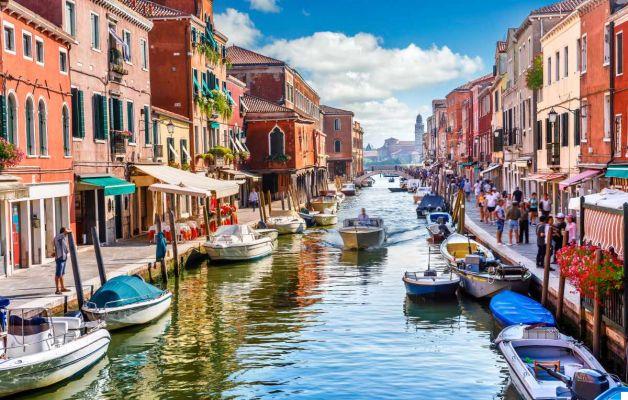
If you are thinking of visiting Murano, think no further: you will not regret it. In addition, consider also seeing Burano e Torcello, two other islands of Venice that are definitely worth a visit.
The Venetian islands are actually numerous, but surely Murano, Burano and Torcello are among the most recommended and you won't need a lot of time to visit them, a day at the most.
QUICK TIPS
reach Murano you can take the ACTV water buses. The best stop to visit Murano is Navagero
You can buy your vaporetto ticket here from 7,50 euros
I vaporetto tickets are included in the ACTV TRANSPORT CARD
I two best tours I'm: EXCURSION TO MURANO AND BURANO e EXCURSION TO MURANO, BURANO and TORCELLO
Do not miss: The Comet in glass, a visit to a workshop with glass blowing experience, the Basilica Santi Maria e Donato, Palazzo da Mula
To see the glass blowing I recommend this guided tour. Better to go midweek and not on weekends due to the huge influx of tourists.
Some factories do the demonstration Free., but it is less thorough and the explanations quicker.
How long does it take to visit Murano: half day, a full day to visit Burano and Torcello as well.
- How to reach Murano
- 1 - Vaporetti
- 2 - Guided tours
- Brief History of Murano
- What to see in Murano
- Other islands of Venice
- Tips for visiting Murano
How to reach Murano
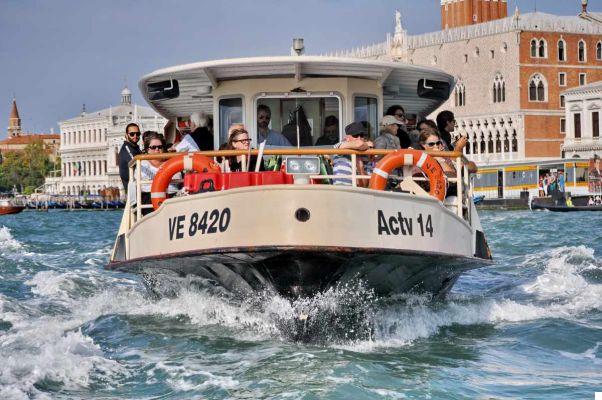
Di Bob Hilscher su
If yours visit to Venice lasts more than a day, then consider the idea of take the ten-minute vaporetto to the island of Murano.
Murano can be seen in a couple of hours, but if you happen to have a full day at your disposal, I recommend that you take a full day to see both Murano and the colorful island of Burano (known for its handmade lace). hand and colored houses) and maybe even Torcello.
The vaporetti
If most of the Italian cities have buses or trams, Venice has the ACTV water buses.
These boats they connect the different districts of the center to each other, but also the city with the surrounding islands.
Traveling on a vaporetto is fun and will allow you to admire the lagoon city from an alternative point of view: Venice from the water is, if possible, even more fascinating.
Here are some of lines that you can use to reach Murano and other islands of Venice.
- Line 4: to reach Murano, San Zaccaria and Giudecca. The vaporetto leaves in front of the Santa Lucia station.
- Line 12: to reach Murano, Burano and San Michele. With this line it is also possible to reach Torcello and Treporti. The vaporetto departs from Fondamente New.
- Line 14: to reach Murano. The vaporetto is taken from St. Mark's Square.
All lines are active from 6 to 22.30 as a minimum.
Tickets can be purchased at the jetties if they are equipped with automatic ticket machines, otherwise just look for an authorized dealer (look for the sticker ACTV displayed in the shop window).
I remind you that it is necessary to validate the ticket before getting on board: with the new electronic tickets you just have to place it on the special machine before boarding.
I advise you to get off at the first stop, Navagero
I ticket prices vary according to the type.
To save money I suggest you buy a hourly ticket: in this way, in fact, you can move freely and visit the islands of Venice in peace.
The best choice, however, is that of buy the TRANSPORT CARD online so that you do not have to waste time once there and to be able to move freely around the city even on buses.
Tour of the islands
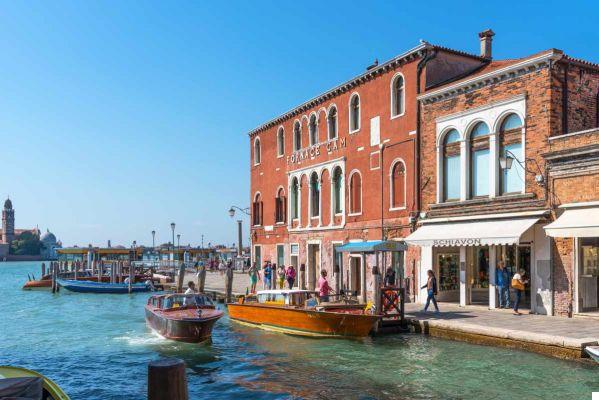
Does organizing the excursion to the islands of Venice independently seem too complicated to you or do you simply have little time available? Then I suggest you to consider taking part in an organized visit.
Between the best tours to visit Murano I suggest two:
EXCURSION TO MURANO AND BURANO: the visit starts at 10 and will accompany you to discover the two most famous islands of the lagoon.
In Murano you will have the opportunity to visit a glass factory and learn about the ancient craft of the glassmaker, while in Burano you can stroll among the colorful houses browsing through the little shops that sell lace.
This excursion lasts 4 hours, but if you want you will be given the opportunity to stay on the islands an extra hour and then embark again later.
EXCURSION TO MURANO, BURANO and TORCELLO: during this visit as well as stop in the already mentioned Murano and Burano, you will have the opportunity to discover the little one too Torcello. The tour lasts 6 hours.
Brief History of Murano
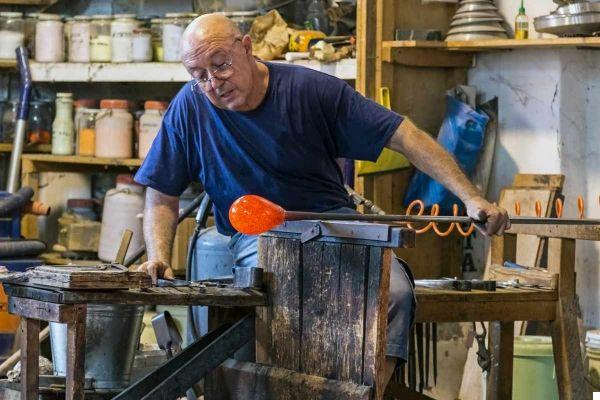
Murano is famous for its beautiful blown glass. To be able to appreciate Murano as it deserves, you need to know a little of its history.
Founded by the Romans, Murano was originally a fishing port and a salt production center.
Murano was completely independent (it even minted its own currency) and only in 1200 did it come under the dominion of Venice, a commercial power whose tentacles spread throughout Europe and beyond.
Around the end of the XNUMXth century, the Venetian government ruled that it was too dangerous to keep glass-blowing furnaces in Venice proper.
Certainly one of the reasons for this "shift" was there fear of fires, since the city palaces were largely built of wood, but also from the need for “Keeping the art of glass blowing secret”.
As good traders, the Venetians knew that the best way to avoid "leaks" and to protect the traditional processes and trade secrets of glass, was to confine everything to a limited place: Murano.
For a period Murano was the main glass production center throughout Europe: blowers refined and perfected their art until Murano glass became famous all over the world. The glassblowing masters of the island enjoyed a privileged status and a lot of prosperity, but at the same time they had severe restrictions, such as the possibility of leaving Venice only with permission from the Republic.
Those who left the city without this were "banished" and could not go back to being a glassmaker. Whoever allowed himself to sell the “secrets” of the art of blowing abroad also risked the death penalty!
By the end of the XNUMXth century, however, some Murano glassmakers left for other parts of Europe and the industry spread to other countries. Murano's position and prosperity took a hard hit.
But in the 20th century, the traditions of Murano glass were revived and new shops were opened. The main glassmakers of Murano have joined and have developed a brand that certifies glass made in Murano with traditional techniques, to distinguish it from copies made in other parts of the world.
What to see in Murano
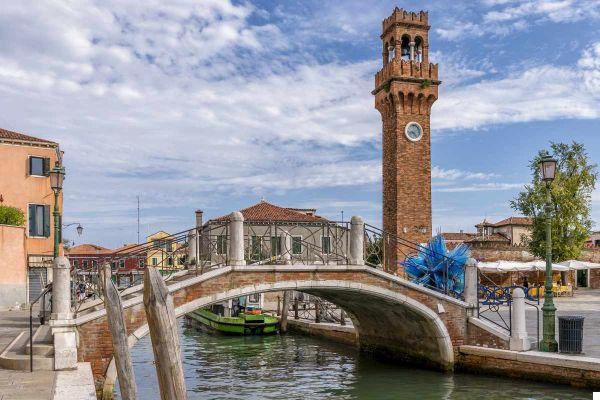
Although Murano is quite small, you could spend whole days here watching the glass blowers at work.
The artisans, with their dexterity and gestures, create real works of art that, if you wish, you can buy in the shops of the workshops or in the many shops scattered around the island.
Il glass, however, it is the protagonist of Murano even outside the factories: just enter the Basilica of Santi Maria e Donato or in the Church of St. Peter Martyr to be able to admire magnificent glass works such as chandeliers and decorations.
As soon as you get off the ferry, it is best to start by taking a walk around the island and along it Grand Canal, as well as getting away from the more touristy streets to explore its picturesque alleys and shops.
You can start your tour at Murano lighthouse, the lighthouse that was first opened in 1912 and continues to function as an active lighthouse today.
Then walk to the Grand Canal - this area is somewhat reminiscent of the quieter parts of Venice, but with fewer tourists.
Take a small detour to see the Palazzo da Mula, a beautiful example of Venetian Gothic architecture, before exploring the area from the Glass Museum and the Murano Cathedral.
1 - Murano lighthouse
For me, who come from a seaside city, lighthouses are one of the most fascinating things there is. The Murano lighthouse it is a cylinder of Istrian marble whose light points straight towards the Lido of Venice, showing ships the path during the night, but not only.
In fact, in ancient times the lighthouses also functioned as lookout towers during the day.
However, the Murano lighthouse is a fairly recent construction. The first, from 1912, was simply a stilt house with an iron lattice. The construction of the marble lighthouse, on the other hand, dates back to the following twenty years and became fully operational in 1934.
2 – Palazzo da Mula
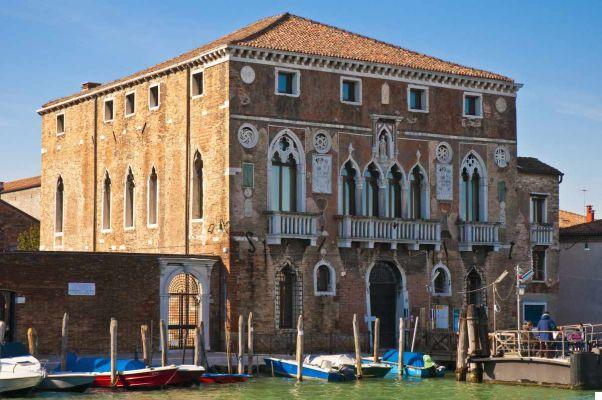
Il Palazzo da Mula it is the seat of the town hall of Murano and is one of the last remaining examples of Venetian Gothic architecture. The building was once a luxurious summer residence of the Venetian patricians, who could afford a facade decorated with large windows in which numerous Venetian-Byzantine influences are also perfectly recognizable.
A garden and courtyard have made Palazzo da Mula unique among Venetian palaces due to the high price of the land on the island.
Inside the Palace today they are organized events and exhibitions.
3 - Museum of Glass
Glass Museum, Fondamenta Marco Giustinian, 8, 30141
Il Murano Glass Museum it is small and some may find it uninteresting, but if you want a complete experience of the island, you should still pay us a visit.
The museum has been open since 1861 and describes the history of glass through the centuries. The collections are arranged in chronological order, with fairly significant pieces of the island's history. There are important testimonies on the history of glass and on the art of glass.
Do not miss the contemporary innovations, in particular the glass with wrought iron by Bellotto, and the techniques of Carlo Scarpa.
-> See here the online ticket of the Glass Museum
The Murano Glass Museum is also included in the MUSEUM PASS VENEZIA
4 - Visit a glass shop
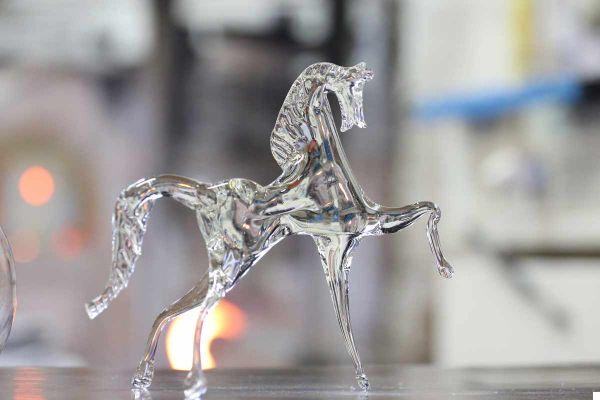
Surely if you visit Murano you will not be able to help but come back with some souvenirs, but in case you do not want to buy anything, I recommend you to do a tour inside one of the shops who sell the splendid glass objects so typical of the island.
You will be amazed by the colors and delicate shapes of the objects on display, from huge chandeliers and vases to tiny beads and earrings, made with various and different techniques.
Il aventurine glass, for example, it is a technique invented here and consists of a translucent crystalline paste with metallic particles inside which give it a "brilliant appearance".
Millefiori is another famous Murano glass technique.
You'll find pieces made using other techniques: gold and silver leaf, colored stripes, glass that looks like porcelain, and beautiful layered pieces.
If you don't buy, a ride is a must anyway!
CAUTION
Unfortunately some of the glass products you find in Murano are made in China. Look for shops that are part of the local consortium, or that have a solid reputation.
Check what you buy and if it does not have the branding Murano Artistic Glass ask the seller for more information.
5 - Sculpture of the Comet Star in Campo Santo Stefano
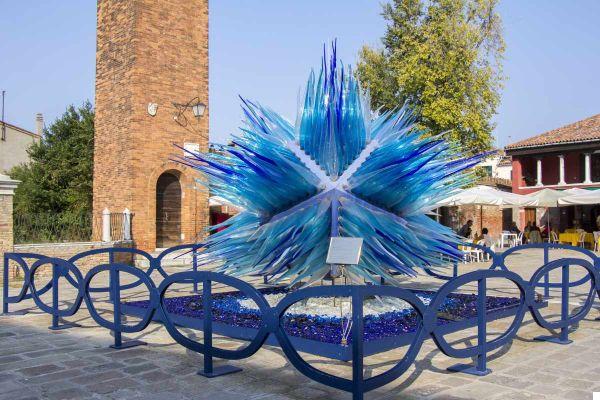
Walk up to Campo Santo Stefano to see the gorgeous glass sculpture of the Comet Star created in 2007 by Simone Cenedese, one of the Murano glass masters.
The huge blue sculpture is visible from afar, but beautiful up close. It was made with several hundred pieces of pointed glass shards of different sizes.
Beautiful to see especially at night when it is fully illuminated.
6 - Church of San Pietro Martire
Church of San Pietro Martire, Fondamenta dei Vetrai, 30141
If you like churches, take a look at the interior of the Church of St. Peter Martyr.
The site's first church building was completely burned to the ground in 1474 and rebuilt in 1511. In the early XNUMXth century, many of the church's paintings were moved to the Gallery of the Academy of Venice.
Here you can observe works by some famous masters, including Veronese, Bellini and Tintoretto. The Baptism of Christ on the right wall is from Tintoretto.
Admire the many large Murano chandeliers hanging from the ceiling!
7 - Watch the glass work
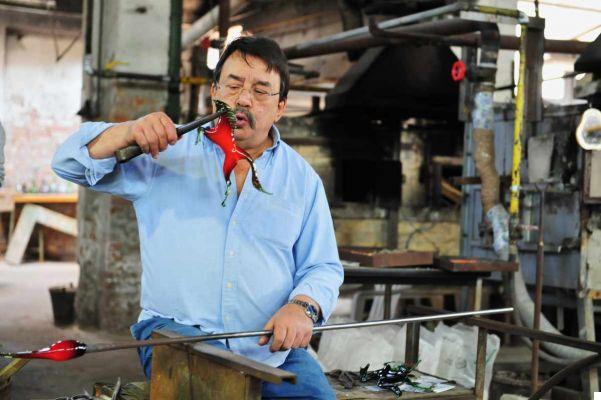
Many Murano glassmakers allow tourists to observe the art of glass blowing inside their furnaces. It is fun to watch the craftsman use heat and sculptural techniques to expertly shape and shape glass.
Your best chance of a non-tourist experience is in the Duomo and Faro area. Many smaller factories in that area will allow you to witness a 20-30 minute demonstration of an item being made.
Most will have a store where you can shop, but if you're not interested, you can decline, thank them, and walk away.
Suggestion: book in advance. Here you will find a guided glass blowing tour with great reviews!
8 - Murano Cathedral (Basilica Santi Maria e Donato)
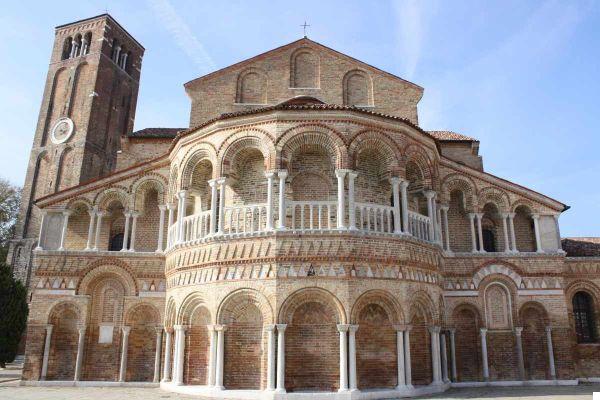
Murano had many churches, but many were demolished to be replaced with glass factories. Only four remain, and among these, the Murano Cathedral, also called Basilica of Santi Maria e Donato is the most important.
The Basilica of Santa Maria e San Donato was originally built in the XNUMXth century, before being rebuilt several times over the centuries.
The interior of the church is gorgeous, especially the XNUMXth century marble floor inlaid with Byzantine mosaics. The dome of the apse is also in mosaic and depicts the Virgin Mary on a golden background.
Look behind the altar - you will find long rib bones. The story tells that they belong to a dragon killed by the saint with only the sign of the cross.
In reality it is about whale bones passed off as those of the monstrous being won by Donato.
Other islands of Venice
When you are talking about islands of Venice, we speak above all of the 3 main ones to visit: Murano, Burano and Torcello. In reality, however, the islands of Venice are approximately 70. These are divided into major and minor.
The first are Sant'Erasmo, Murano, Vignole, Chioggia, Burano, Giudecca, Mazzorbo, Torcello and La Certosa. These also include the coasts of Venice Lido, Pallestrina and Sottomarina.
In addition to the major islands, there are also a myriad of smaller islands divided between the North Lagoon and the South Lagoon.
Listing them all in this article would become too long, but I can suggest that, among the smaller Venetian islands, the ones that are worth a visit are:
- THEisland of San Michele, which houses the cemetery;
- THEisland of San Lazzaro degli Armeni, almost entirely occupied by the monastery of the Mechitarist order;
- The island of San Servolo, where you can visit the Asylum Museum dedicated to Franco Basaglia;
- The island of Sant'Erasmo, defined as "the vegetable garden of Venice" for the numerous crops among which that of the artichoke stands out.
Tips for visiting Murano
Il best time to visit Murano they are spring and autumn.
Better to go to the weekdays: on weekends there are always a lot of people
reach Murano you can take the ACTV water buses.
I vaporetto tickets are included in the TRANSPORT PASS from Venice
I two best tours I'm: EXCURSION TO MURANO AND BURANO e EXCURSION TO MURANO, BURANO and TORCELLO
Do not miss: The Stella Comet in glass, a visit to a workshop with glass blowing experience, the Basilica Santi Maria e Donato, Palazzo da Mula.
Wear comfortable shoes, suitable for walking.
Be careful when buying any glass object that is not made in China, only contact artists who are part of the consortium, or well known or check that the objects have the Murano glass brand.
Take a long walk Fondamenta dei Vetrai, the most characteristic street of Murano.
If you have a full day don't get lost too Burano and Torcello.




